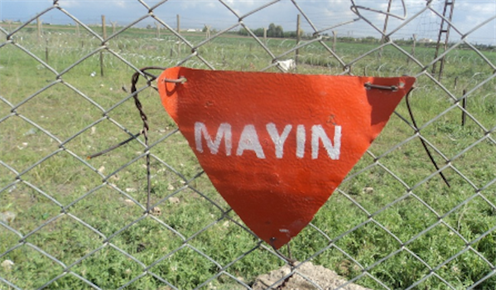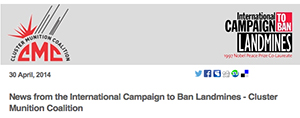Completion in 2025? In 2030? In Our Lifetime…?

Minefield at Turkey-Syria border © Loren Persi/ICBL, March 2013
Land clearance is one of the core obligations of the Mine Ban Treaty, and one of the most vital to fulfilling the purpose of the Treaty – “to put an end to the suffering and casualties caused by antipersonnel mines” – and deliver on the promise of a mine-free world.
Under Article 5 of the Treaty, every affected State Party has an obligation to clear all its contaminated land as soon as possible, and not later than ten years after the Treaty’s entry into force for that state.
At the Third Review Conference in Maputo, States Parties adopted the aspirational goal of 2025, to meet their time-bound obligations, in particular land clearance, to the greatest extent possible. This goal was reiterated in 2019, at the Fourth Review Conference in Oslo, where States Parties adopted the Oslo Action Plan (OAP) 2019–2024,as “an essential tool towards the fulfilment of this ambition.” Under the OAP States Parties made very specific time-bound commitments aimed at robust and timely implementation of land clearance.
The prolonged and extensive delays in implementation of Article 5 clearance obligations are one of the greatest challenges facing the Treaty and the mine ban community today. These can undermine the credibility of the Treaty and of States Parties’ commitments to the Oslo Action Plan and the 2025 completion goal.
As of today, some 22 years after the treaty’s entry into force, landmines continue causing suffering and casualties at an unacceptable high level.
While 31 States Parties have fulfilled their Art. 5 obligations to clear all their antipersonnel mine contamination, at least a further 32 States Parties remain contaminated and have yet to fulfill their clearance obligations.
The ICBL invites all states and partners of the mine ban community to read about key findings and concerns, as well as recommendations in regard to current trends in implementation of Art. 5 and urges a dialogue on these matters among the Treaty’s States Parties and broader mine action community, that would lead to making this issue a priority for the 19th Meeting of States Parties and reinvigorating implementation of Art. 5.
Background Paper:
- Completion in 2025? 2030? In Our Lifetime? - ICBL discussion paper on implementation of Article 5 of the Mine Ban Treaty;
- Analysis of (81) Article 5 Extensions From 2009 through the 18th MSP (2020) - by Peter Herby, Consultant on Humanitarian-based Arms Control and Disarmament


